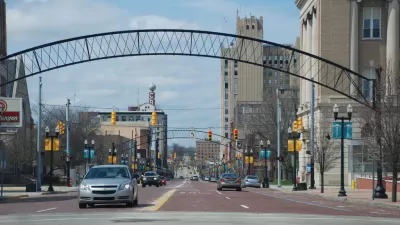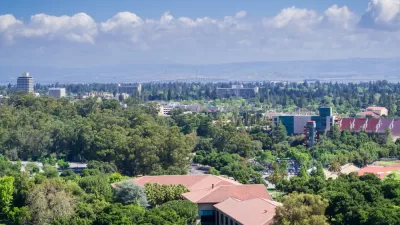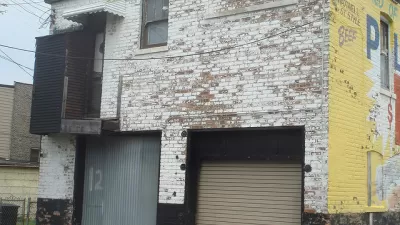New research assesses the land value of street space in 20 of the largest counties in the United States.

"During lockdowns, cities all over the world turned residential and commercial corridors into slow (or no) vehicle zones for pedestrians, cyclists, cafe seating, parklets and play," writes Laura Bliss in Bloomberg CityLab. Our ideas about what streets could be shifted radically in many places. Yet, before the pandemic, "people rarely questioned just how much space streets take up in the first place," says UCLA urban planning professor Adam Millard-Ball.
According to Millard-Ball's recent research into 20 U.S. counties, "streets took up 18% of the total land area in these counties, ranging from 14% in Middlesex County, Massachusetts (which contains the suburbs of Boston) to 30% in Kings County, New York (which is Brooklyn)." Millard-Ball also calculated the value of this space, "estimat[ing] that the residential streets in that area would be worth $959 billion if they were instead zoned for single-family homes, based on 2019 prices."
"Despite studies that show narrow streets are actually safer for users, large widths persist as required standards in local subdivision regulations." The programs created during the pandemic show that different uses are possible, and Millard-Ball argues the space could be better put to use as housing. "Cities could also allow owners to push property lines into streets to make way for front-yard ADUs or bigger, multi-family developments. And if that’s still too tricky, they could start by legalizing overnight parking for people who sleep in their cars and vans."
FULL STORY: MapLab: The High Cost of Wide Streets

Planetizen Federal Action Tracker
A weekly monitor of how Trump’s orders and actions are impacting planners and planning in America.

Chicago’s Ghost Rails
Just beneath the surface of the modern city lie the remnants of its expansive early 20th-century streetcar system.

San Antonio and Austin are Fusing Into one Massive Megaregion
The region spanning the two central Texas cities is growing fast, posing challenges for local infrastructure and water supplies.

Since Zion's Shuttles Went Electric “The Smog is Gone”
Visitors to Zion National Park can enjoy the canyon via the nation’s first fully electric park shuttle system.

Trump Distributing DOT Safety Funds at 1/10 Rate of Biden
Funds for Safe Streets and other transportation safety and equity programs are being held up by administrative reviews and conflicts with the Trump administration’s priorities.

German Cities Subsidize Taxis for Women Amid Wave of Violence
Free or low-cost taxi rides can help women navigate cities more safely, but critics say the programs don't address the root causes of violence against women.
Urban Design for Planners 1: Software Tools
This six-course series explores essential urban design concepts using open source software and equips planners with the tools they need to participate fully in the urban design process.
Planning for Universal Design
Learn the tools for implementing Universal Design in planning regulations.
planning NEXT
Appalachian Highlands Housing Partners
Mpact (founded as Rail~Volution)
City of Camden Redevelopment Agency
City of Astoria
City of Portland
City of Laramie




























